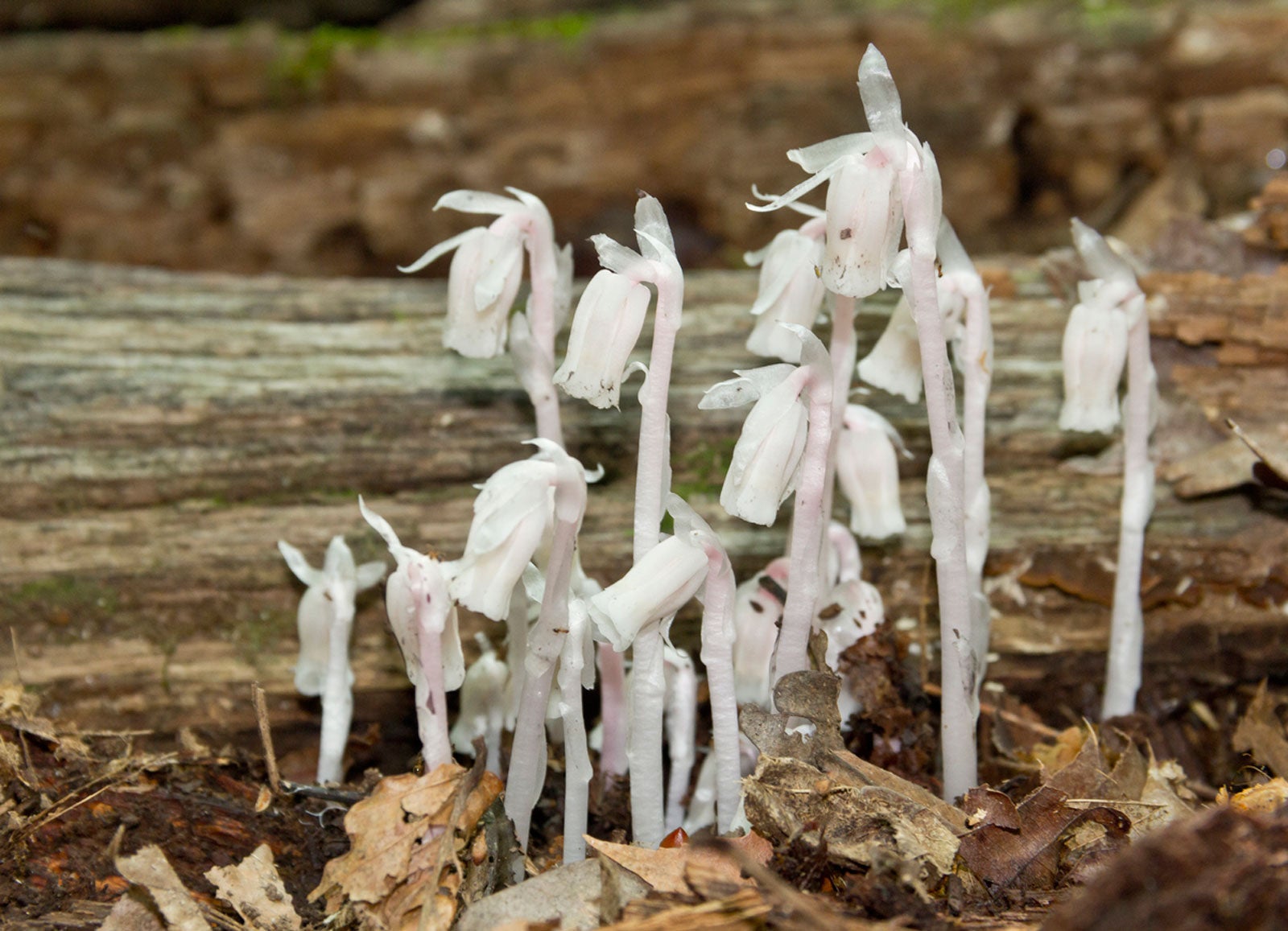White Plant Photosynthesis: How Plants That Aren't Green Photosynthesize


Did you ever wonder how plants that aren't green photosynthesize? Plant photosynthesis occurs when sunlight creates a chemical reaction in the leaves and stems of plants. This reaction turns carbon dioxide and water into a form of energy that can be used by living things. Chlorophyll is the green pigment in leaves that captures the sun's energy. Chlorophyll appears green to our eyes because it absorbs other colors of the visible spectrum and reflects the color green.
How Plants That Aren't Green Photosynthesize
If plants require chlorophyll to produce energy from sunlight, it's logical to wonder if photosynthesis without chlorophyll can occur. The answer is yes. Other photopigments can also utilize photosynthesis to convert the sun's energy.
Plants that have purplish-red leaves, like Japanese maples, use the photopigments that are available in their leaves for the process of plant photosynthesis. In fact, even plants that are green have these other pigments. Think about deciduous trees that lose their leaves in the winter.
When autumn arrives, the leaves of deciduous trees stop the process of plant photosynthesis and the chlorophyll breaks down. The leaves no longer appear green. The color from these other pigments become visible and we see beautiful shades of yellows, oranges and reds in the fall leaves.
There is a slight difference, however, in the way green leaves capture the sun's energy and how plants without green leaves undergo photosynthesis without chlorophyll. Green leaves absorb sunlight from both ends of the visible light spectrum. These are the violet-blue and reddish-orange light waves. The pigments in non-green leaves, like the Japanese maple, absorb different light waves. At low light levels, non-green leaves are less efficient at capturing the sun's energy, but at midday when the sun is the brightest, there is no difference.
Can Plants Without Leaves Photosynthesize?
The answer is yes. Plants, like cacti, don't have leaves in the traditional sense. (Their spines are actually modified leaves.) But the cells in the body or “stem” of the cactus plant still contain chlorophyll. Thus, plants like cacti can absorb and convert energy from the sun through the process of photosynthesis.
Likewise, plants like mosses and liverworts also photosynthesize. Mosses and liverworts are bryophytes, or plants that have no vascular system. These plants don't have true stems, leaves or roots, but the cells that compose the modified versions of these structures still contain chlorophyll.
Gardening tips, videos, info and more delivered right to your inbox!
Sign up for the Gardening Know How newsletter today and receive a free copy of our e-book "How to Grow Delicious Tomatoes".
Can White Plants Photosynthesize?
Plants, like some types of hosta, have variegated leaves with large areas of white and green. Others, like caladium, have mostly white leaves that contain very little green color. Do the white areas on the leaves of these plants conduct photosynthesis?
It depends. In some species, the white areas of these leaves have insignificant amounts of chlorophyll. These plants have adaptation strategies, such as large leaves, that allow the green areas of the leaves to produce sufficient amounts of energy to support the plant.
In other species, the white area of the leaves actually contains chlorophyll. These plants have changed the cell structure in their leaves so they appear to be white. In reality, the leaves of these plants contain chlorophyll and use the process of photosynthesis to produce energy.
Not all white plants do this. The ghost plant (Monotropa uniflora), for example, is an herbaceous perennial that contains no chlorophyll. Instead of producing its own energy from the sun, it steals energy from other plants much like a parasitic worm robs nutrients and energy from our pets.
In retrospect, plant photosynthesis is necessary for plant growth as well as the production of the food we eat. Without this essential chemical process, our life on earth wouldn't exist.

Laura Miller has been gardening all her life. Holding a degree in Biology, Nutrition, and Agriculture, Laura's area of expertise is vegetables, herbs, and all things edible. She lives in Ohio.